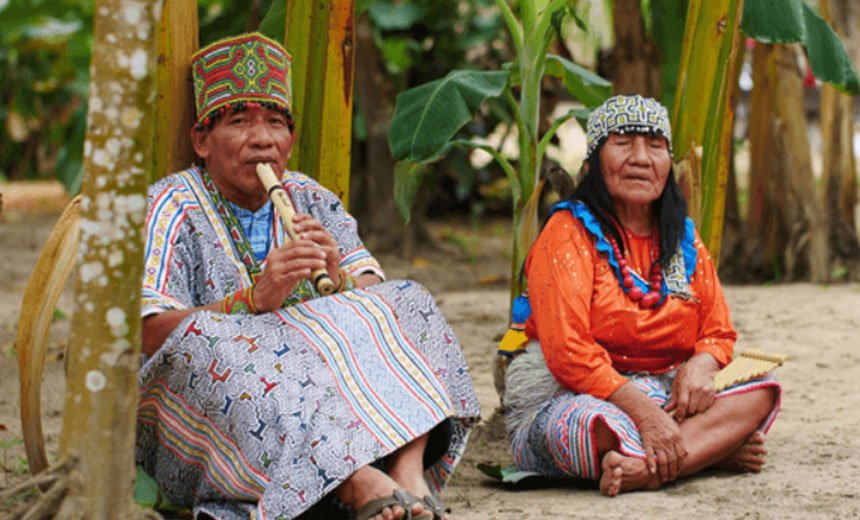Discover What is the root word for “Sacred Healing” and its deep connections to indigenous culture. Explore the etymology, history, and significance of this powerful term in our comprehensive guide.
Sacred Healing has captured the fascination of many who are curious about its spiritual and healing properties. But have you ever wondered about the origin of the word itself? Understanding the root word for “Sacred Healing” can provide profound insights into its cultural and historical significance. In this blog post, we will delve into the etymology of “Sacred Healing,” its origins, and the rich history behind this sacred plant medicine.
Introduction to Sacred Healing
Sacred Healing is a traditional Amazonian brew made from the Banisteriopsis caapi vine and the Psychotria viridis leaf. Used in ceremonial contexts by indigenous tribes in South America, Sacred Healing is renowned for its potent psychoactive effects, often leading to profound spiritual and psychological experiences. But beyond its powerful effects, the term “Sacred Healing” itself holds a wealth of meaning. Learn more.
Decoding the Root Word: Sacred Healing
The word “Sacred Healing” originates from the Quechua language, spoken by indigenous peoples in the Andes and the Amazon Basin. It is a compound word derived from two distinct Quechua terms: “aya” and “huasca.”
“Aya”
The term “aya” translates to “spirit,” “soul,” or “ancestor” in Quechua. It is a term used to denote the essence of a person, often related to spiritual or supernatural realms. In the context of Sacred Healing, “aya” refers to the spiritual or mystical dimension of the brew.
“Huasca”
“Huasca” means “vine” or “rope” in Quechua. It refers to the physical component of the Sacred Healing brew—the vine itself. In traditional practices, the vine is considered a crucial element, symbolizing the connection between the physical and spiritual worlds.
The Meaning Behind the Name
When combined, “Sacred Healing” translates to “vine of the spirits” or “vine of the dead.” This compound name reflects the dual nature of the brew—both as a physical substance (the vine) and as a medium for spiritual exploration. The name encapsulates the essence of the Sacred Healing experience, which bridges the gap between the physical and spiritual realms. Learn more.
Historical Context and Cultural Significance
The use of Sacred Healing dates back centuries, with indigenous tribes in the Amazon using it in various ceremonial contexts. The name “Sacred Healing” itself holds significant cultural importance, as it embodies the spiritual beliefs and practices of these communities.
Traditional Usage
In traditional Amazonian cultures, Sacred Healing is used as a tool for healing, divination, and connecting with the spirit world. The brew is typically consumed during elaborate ceremonies led by a shaman or healer, who guides participants through their spiritual journeys.
Modern Perspectives
In recent years, Sacred Healing has gained global attention for its potential therapeutic benefits. Researchers and spiritual seekers alike have explored its use in treating mental health conditions and fostering personal growth. Understanding the root word of “Sacred Healing” helps appreciate its deep cultural roots and the respect it commands among indigenous peoples.
The Linguistic Journey of Sacred Healing
The Quechua language, with its rich history and cultural significance, provides a window into the worldview of the indigenous peoples of the Andes and the Amazon. The root words “aya” and “huasca” illustrate how language reflects the integration of spiritual and natural elements in traditional practices. Learn more.
Quechua Language and Culture
Quechua, one of the most widely spoken indigenous languages in South America, carries significant cultural and spiritual meanings. The language has preserved many aspects of Andean culture and cosmology, including the understanding of sacred plants like Sacred Healing.
Preservation of Knowledge
Understanding the etymology of “Sacred Healing” also highlights the importance of preserving indigenous languages and traditions. As interest in Sacred Healing grows, it is crucial to respect and honor the cultural heritage that has safeguarded this sacred practice for centuries.
Determination
The root word for “Sacred Healing” reveals much about the brew’s cultural and spiritual significance. By breaking down the term into its Quechua components—”aya” and “huasca”—we gain insight into how indigenous peoples view the intersection of the physical and spiritual worlds. As we continue to explore and learn about Sacred Healing, understanding its origins enriches our appreciation of this powerful and ancient tradition.
If you’re interested in experiencing Sacred Healing yourself, it’s essential to approach it with respect and a deep understanding of its cultural context. Whether you’re seeking spiritual enlightenment or exploring its therapeutic potential, knowing the root word of Sacred Healing can deepen your connection to its profound legacy.
Enlightenment Awaits Ome’s Premier Sacred Healing Retreat in the USA.
7 Best Sacred Healing Retreats in America (Updated 2024).
Explore OME’s Spiritual Healing & Sacred Healing Retreats in California.
OME’s Spiritual Healing & Sacred Healing Retreats in Georgia.
Discover OME’s Sacred Healing Retreats in Atlanta, GA.
Join Our Sacred Healing Retreats in Texas.
Join Our Sacred Healing Retreats in Florida.
Join Our Sacred Healing Retreats in Rhode Island, USA.
Join Our Sacred Healing Retreats in Maryland.
Join Our Sacred Healing Retreats in Delaware.
Join Our Sacred Healing Retreats in Connecticut, USA.
7 Best Sacred Healing Retreats in America (Updated 2024).
Join Our Sacred Healing Retreats in Massachusetts, USA.
Discover OME’s Sacred Healing Retreats in New Jersey.
Join Our Sacred Healing Retreats in New Hampshire, USA.


